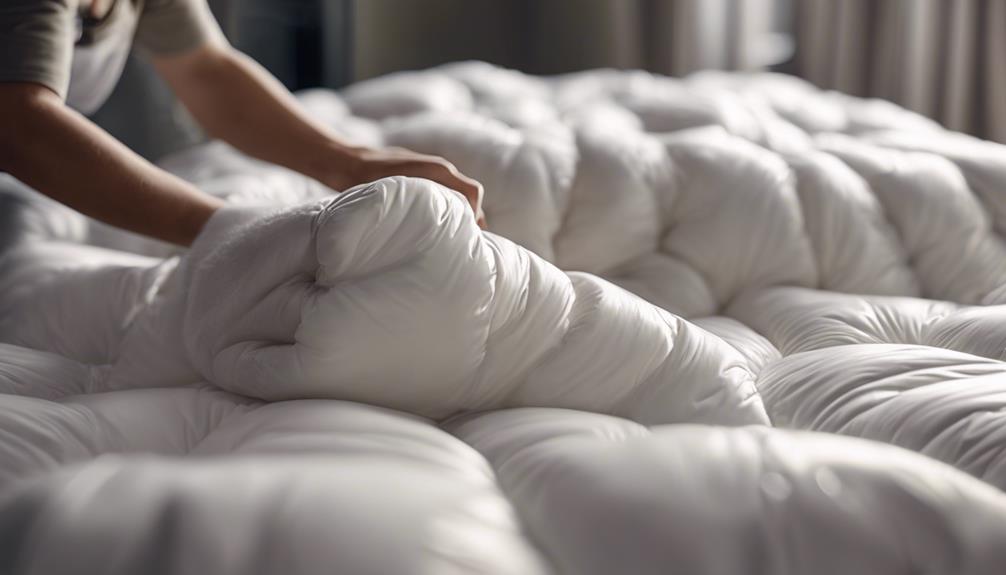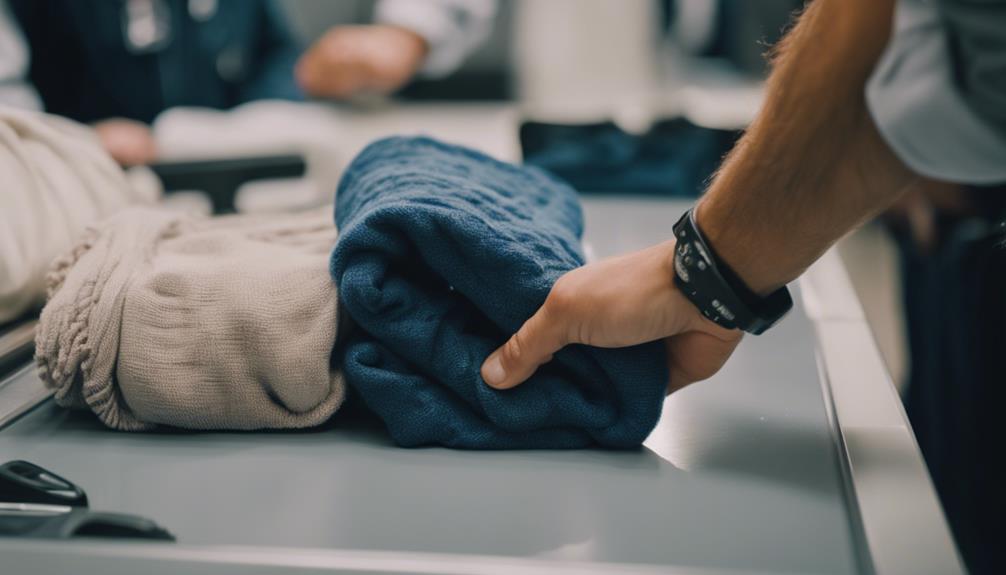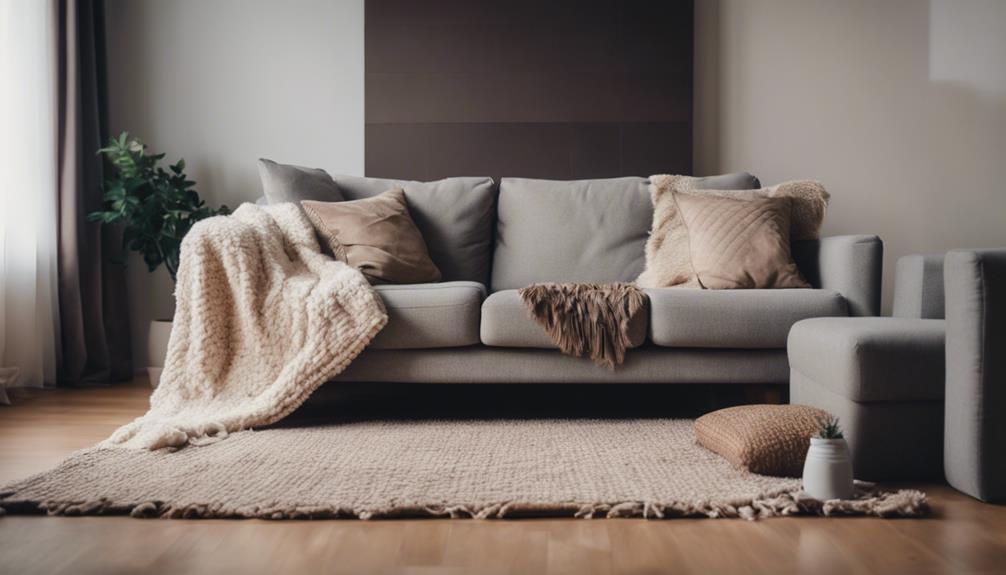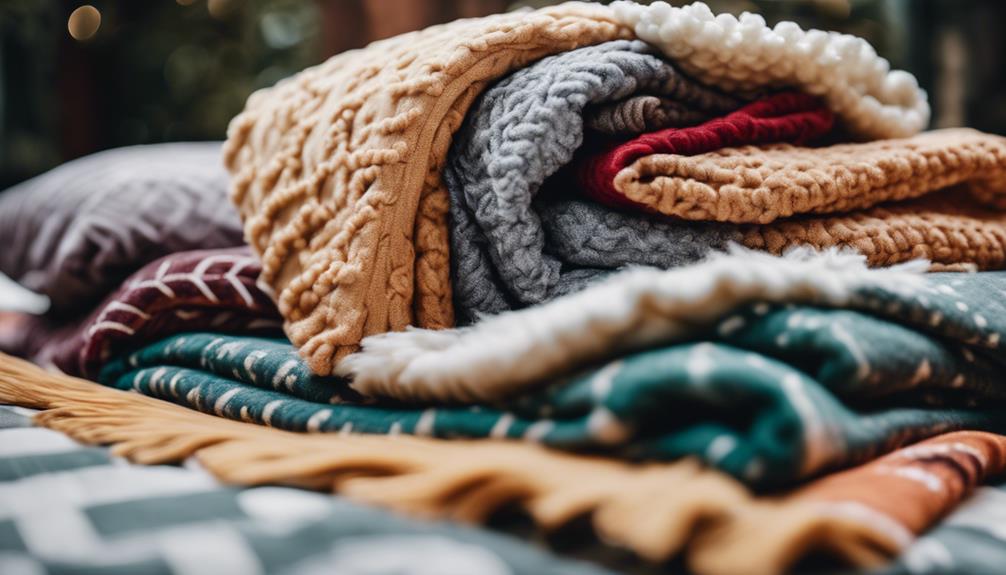Electric throws are a great investment for their energy efficiency, costing around 1p per hour. They come with customizable heat settings, making them perfect for unwinding and relieving muscle tension. Safety features like automatic shut-off provide peace of mind. These throws are cost-effective for daytime use, offering quick warmth. With a lower environmental impact, they are both practical and cozy. Remember to properly maintain them for longevity. In general, electric throws offer a comforting and therapeutic solution for warmth and relaxation. Their benefits make them a practical choice for those in search of comfort and coziness. Find out more about how electric throws can improve your relaxation and overall well-being.
Key Takeaways
- Energy-efficient and cost-effective operation at around 1p per hour.
- Provides customizable heat settings for personalized relaxation.
- Enhances comfort, relaxation, and well-being with soothing warmth.
- Offers therapeutic benefits by alleviating muscle aches and joint pain.
- Consider safety precautions, durability, and environmental impact for a holistic evaluation.
Energy Efficiency of Electric Throws
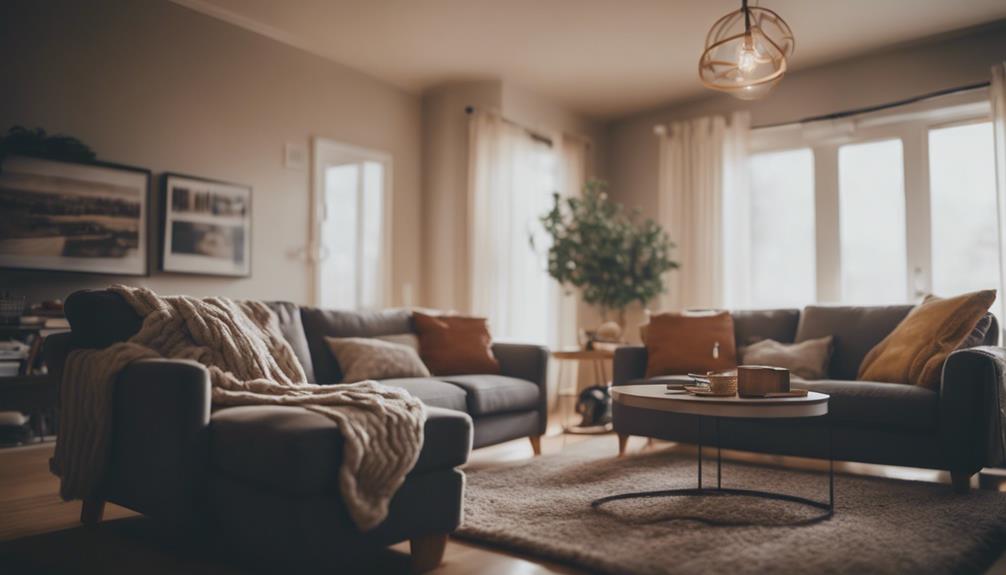
When evaluating the energy efficiency of electric throws, it's important to consider their initial running cost and long-term durability. Heated throws are known for their cost-effective operation, estimated at around 1p per hour, making them energy-efficient options for staying warm.
Users often find electric throws to be more economical for daytime use compared to running central heating systems, leading to potential energy savings over time. However, some issues like overheating cut out failures have been reported, impacting the energy efficiency of these throws.
On the flip side, certain models have shown durability by lasting 4-5 years, indicating long-term energy efficiency benefits. Additionally, the quick warming ability of electric throws adds to their energy efficiency by providing instant warmth when needed.
Considering these factors can help consumers make informed decisions when choosing an electric throw for both comfort and energy-saving purposes.
Comfort and Relaxation Benefits

Electric throws offer instant warmth and comfort, with customizable heat settings for personalized relaxation. They can help ease muscle tension, creating a cozy and soothing environment in your living space.
Using an electric throw at the end of a long day can enhance relaxation and promote a sense of comfort and well-being.
Warmth and Coziness
Curling up with an electric throw instantly envelops us in warmth and coziness, perfect for unwinding after a long day. These heated blankets provide immediate comfort, making them ideal for snuggling up on chilly evenings.
With customizable heat settings, electric throws cater to individual preferences, ensuring a cozy experience tailored to your liking. Beyond just keeping you warm, these blankets are designed to promote relaxation and well-being, offering stress relief in a plush package.
The therapeutic benefits go further as the warmth can help soothe muscle tension and joint stiffness, enhancing your comfort and overall relaxation. Investing in an electric throw can greatly enhance your home environment, providing a haven of warmth and coziness for ultimate relaxation.
Therapeutic Relaxation
Nestling under an electric throw envelops us in a cocoon of soothing warmth, promoting relaxation and comfort in a gentle embrace. The therapeutic benefits of the best electric blankets extend beyond just warmth. They help alleviate muscle aches and joint pain, improve circulation, and reduce stress.
The consistent heat provided by electric throws creates a calming environment, perfect for unwinding after a long day. This relaxation can lead to a sense of pure bliss and enhance comfort in your home. By investing in an electric throw, you're not only adding a cozy touch to your space but also prioritizing your well-being through therapeutic relaxation.
Experience the calming effects firsthand and indulge in the comfort these blankets offer.
Safety Considerations to Keep in Mind

When using an electric throw, it is crucial to prioritize safety by implementing proper precautions and following guidelines to prevent accidents and guarantee longevity. Electric throws can be a fire hazard if left unattended; however, newer models usually come with automatic shut-off features to prevent overheating. Following safety measures such as unplugging the throw when not in use and avoiding exposure to water can help mitigate risks. To help you understand safety considerations better, we have compiled the following table:
| Safety Considerations | Recommendations |
|---|---|
| Fire Hazard | Do not leave the electric throw unattended. |
| Safety Measures | Follow manufacturer's guidelines and unplug when not in use. |
Cost-Effectiveness of Electric Throws
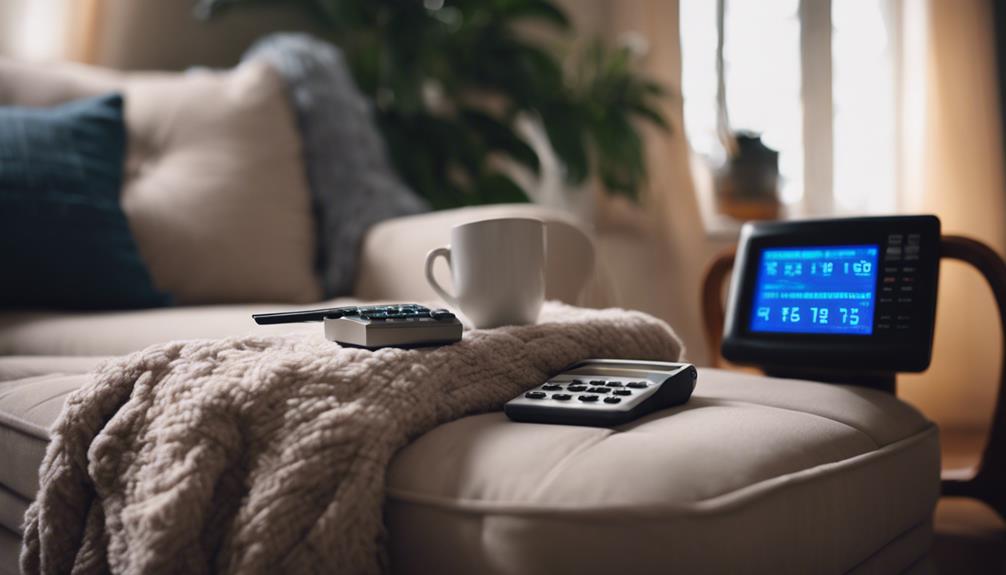
Discussing the cost-effectiveness of electric throws reveals their potential for saving on heating bills and providing quick warmth, making them a practical choice for home use. Electric throws have been found to save money by reducing the need for central heating during the day.
Here are some key points to take into account:
- Initial Running Cost: Electric throws are estimated to cost around 1p/hr initially, but prices have increased over time.
- Common Issues: Some users have reported overheating cut out failures with certain electric throws.
- Durability: While some electric throws can last 4-5 years, others may stop working after just a few months.
- Savings: Users find electric throws cost-effective for daytime use instead of relying solely on central heating, resulting in lower heating bills.
- Quick Warmth: The quick warming ability of electric throws makes them a practical choice for staying warm at home, especially during colder seasons.
Environmental Impact of Electric Throws
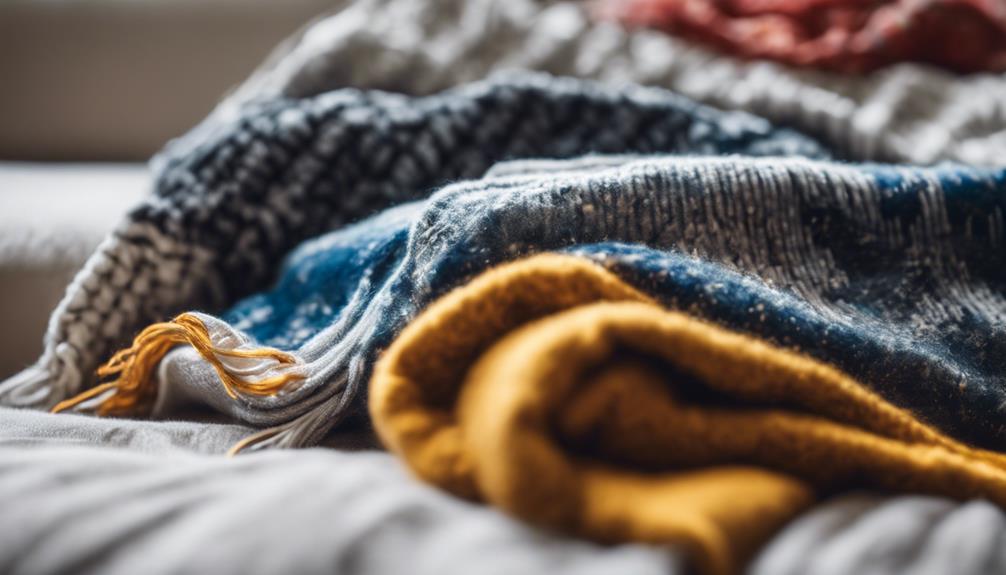
Considering their lower environmental impact and energy-efficient operation, electric throws offer a sustainable heating solution that minimizes wastage and reduces greenhouse gas emissions. Electric throws are designed to provide warmth in specific areas, consuming minimal electricity compared to central heating systems. This targeted heating approach not only conserves energy resources but also aligns with eco-friendly practices, contributing to a reduction in overall carbon footprint. The efficient use of electricity by electric throws makes them a practical choice for those aiming to lower their environmental impact without compromising on comfort.
| Benefits of Electric Throws |
|---|
| Energy-efficient |
| Targeted heating solution |
| Reduces greenhouse gas emissions |
Maintenance and Care Tips
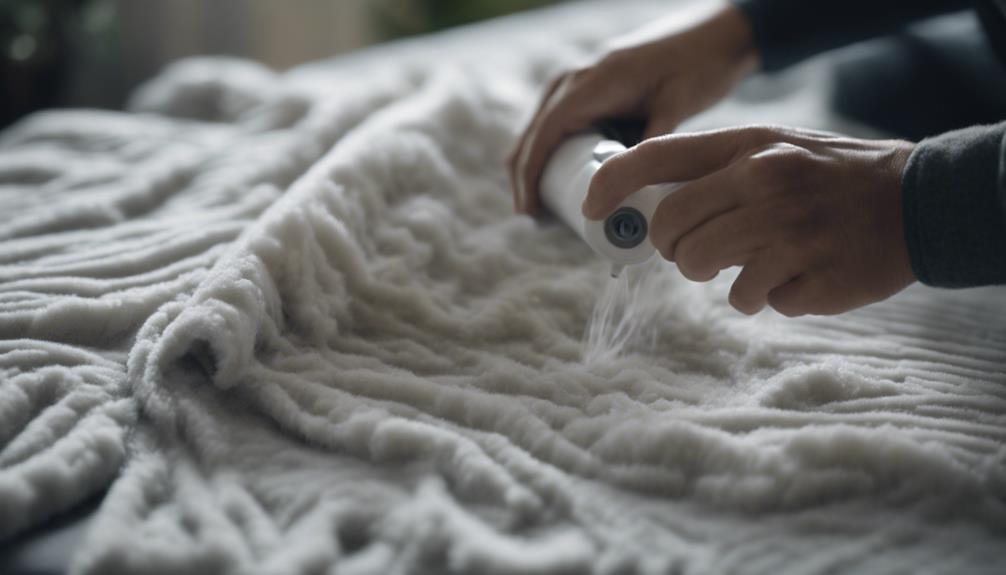
To guarantee the longevity and peak performance of your electric throw, regular monitoring for wear and tear issues is essential. Follow these maintenance and care tips to make sure your best heated throw or Heated Blanket stays in top condition:
- Regularly monitor the condition of your electric throw to identify any wear and tear issues.
- Follow the manufacturer's washing instructions to maintain the quality and longevity of your electric throw.
- Store your electric throw in a dry location without stacking heavy items on top to prevent damage.
- Inspect the cords of your electric throw regularly and wind them up properly when not in use to avoid tangling or fraying.
- Proper maintenance and care of your electric throw can help guarantee its safety and effectiveness over time.
Consumer Reviews and Recommendations
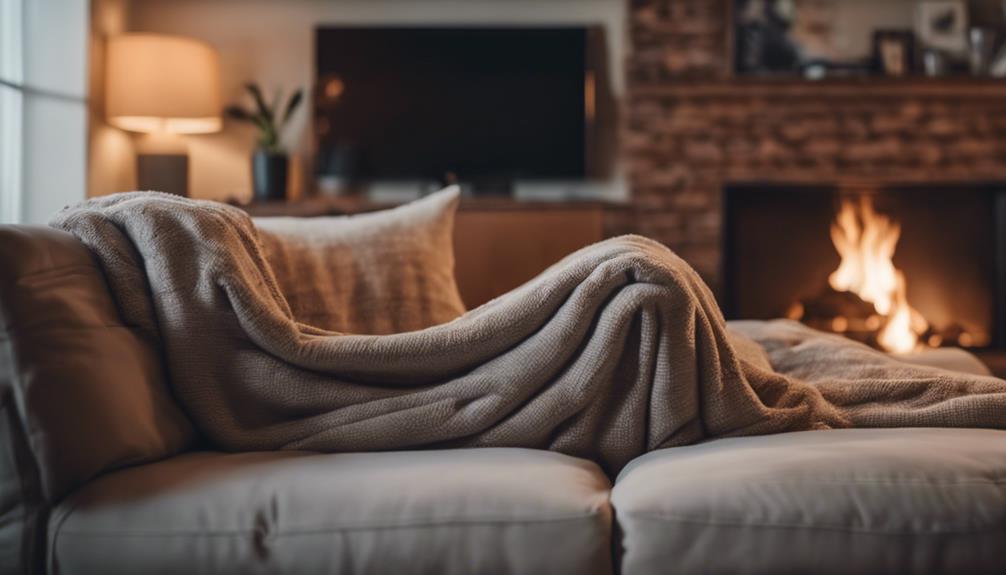
After looking at maintenance and care tips for electric throws, let's now explore consumer reviews and recommendations to gain insights into user experiences with these heated blankets.
Some users report that electric throws can last 4-5 years, while others experience failures after just a few months. They're considered essential for daytime use when compared to running central heating systems. Users find electric throws practical for warming up beds before sleeping and staying warm while working from home.
However, opinions are divided on the durability of electric throws, with some users preferring traditional blankets that may not retain heat as efficiently. When choosing an electric throw, personal preferences and needs should be considered. Amazon offers reliable options based on customer reviews. It's important to weigh the pros and cons to determine if electric throws are the right choice for your heating needs.
Frequently Asked Questions
Are Heated Throws a Good Idea?
They're a practical and cost-effective solution for staying warm and cozy. Electric throws provide adjustable warmth to suit individual preferences. They're easy to use, simply requiring plugging in to enjoy the warmth.
These throws offer a touch of luxury, ideal for enhancing relaxation, comfort, and creating a cozy atmosphere at home. Health benefits include muscle pain relief, improved circulation, and overall well-being, promoting relaxation and stress relief.
Are Electric Throws Expensive to Run?
Electric throws can vary in running costs. Initial estimates suggest they're cheap, around 1p per hour. However, prices have increased due to rising electricity costs.
Some users report issues like overheating and failures. While some may fail after a few months, Aldi throws have lasted 4-5 years.
They can be cost-effective as a supplement to central heating during the day, potentially helping to save on heating bills.
What Are the Disadvantages of an Electric Blanket?
Electric blankets have several disadvantages to take into account. They can pose a fire hazard if left on accidentally, although newer models have safety features.
The wiring can be damaged by water, making them not washable without a removable cover. Pets may damage the blanket by clawing or chewing on it, risking harm to them.
While heated blankets can relax pets, caution is needed to prevent damage.
It's important to weigh these drawbacks before purchasing one.
How Long Do Electric Throws Last?
Electric throws' longevity varies, with some lasting only months and others up to 4-5 years. Common issues include overheating cut out failures.
They're cost-effective for daytime use versus central heating. Preferences sometimes lean towards traditional blankets due to mixed durability experiences.
Checking Amazon for reliable options and considering personal needs before purchase is important for longevity and satisfaction. It's wise to research and choose wisely to guarantee a good investment.
What Are the Benefits of Using Electric Throws?
Electric throws are becoming increasingly popular due to their efficiency and quality. These heated blankets provide instant warmth and comfort, making them ideal for chilly nights or lounging at home. With adjustable settings and automatic shut-off features, electric throws offer convenience and energy savings.
Conclusion
To sum up, electric throws are worth it for their energy efficiency. According to a study by the Department of Energy, electric throws use up to 50% less energy than traditional space heaters, saving you money on your electricity bill.
With their comfort, safety features, and cost-effectiveness, electric throws are a practical and cozy addition to any home.

